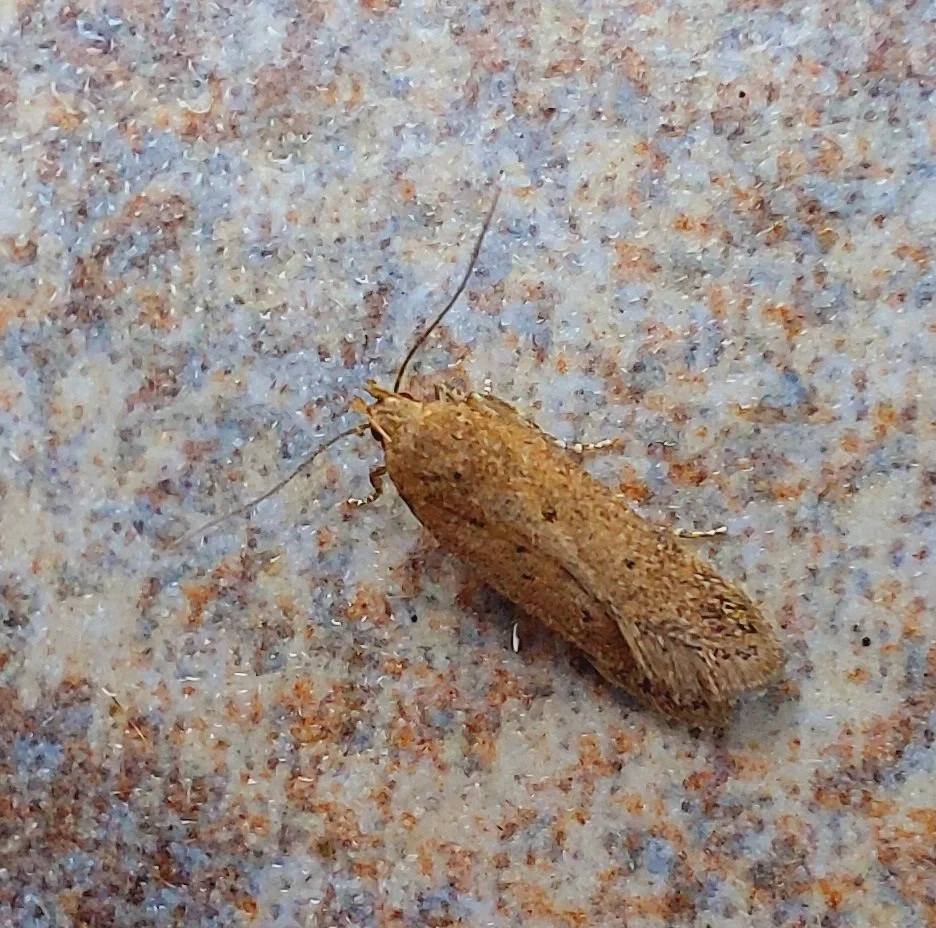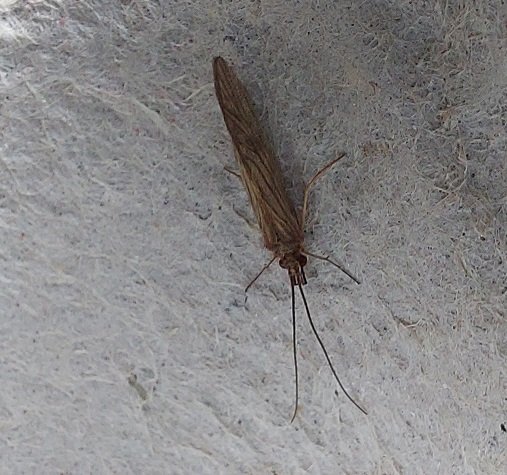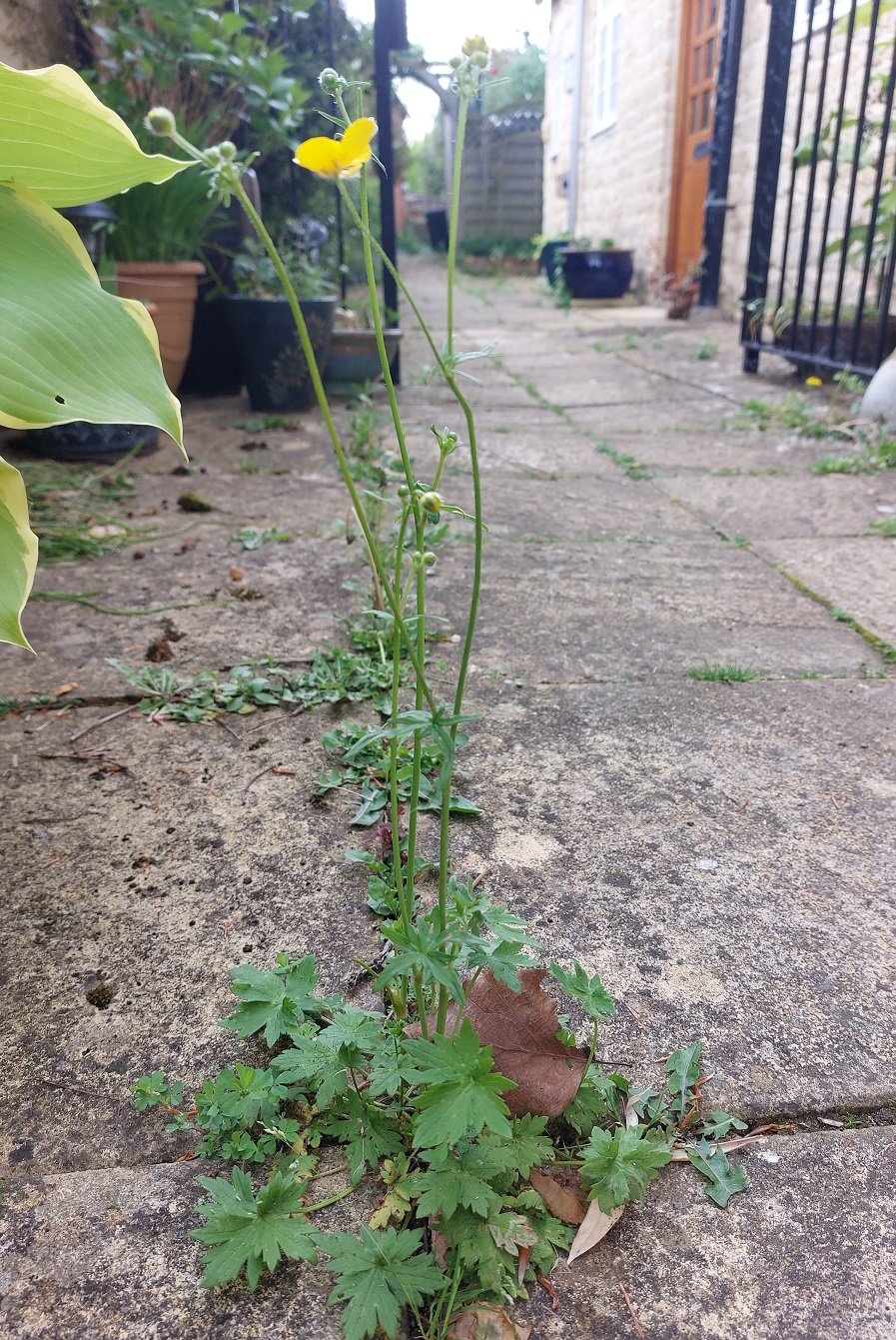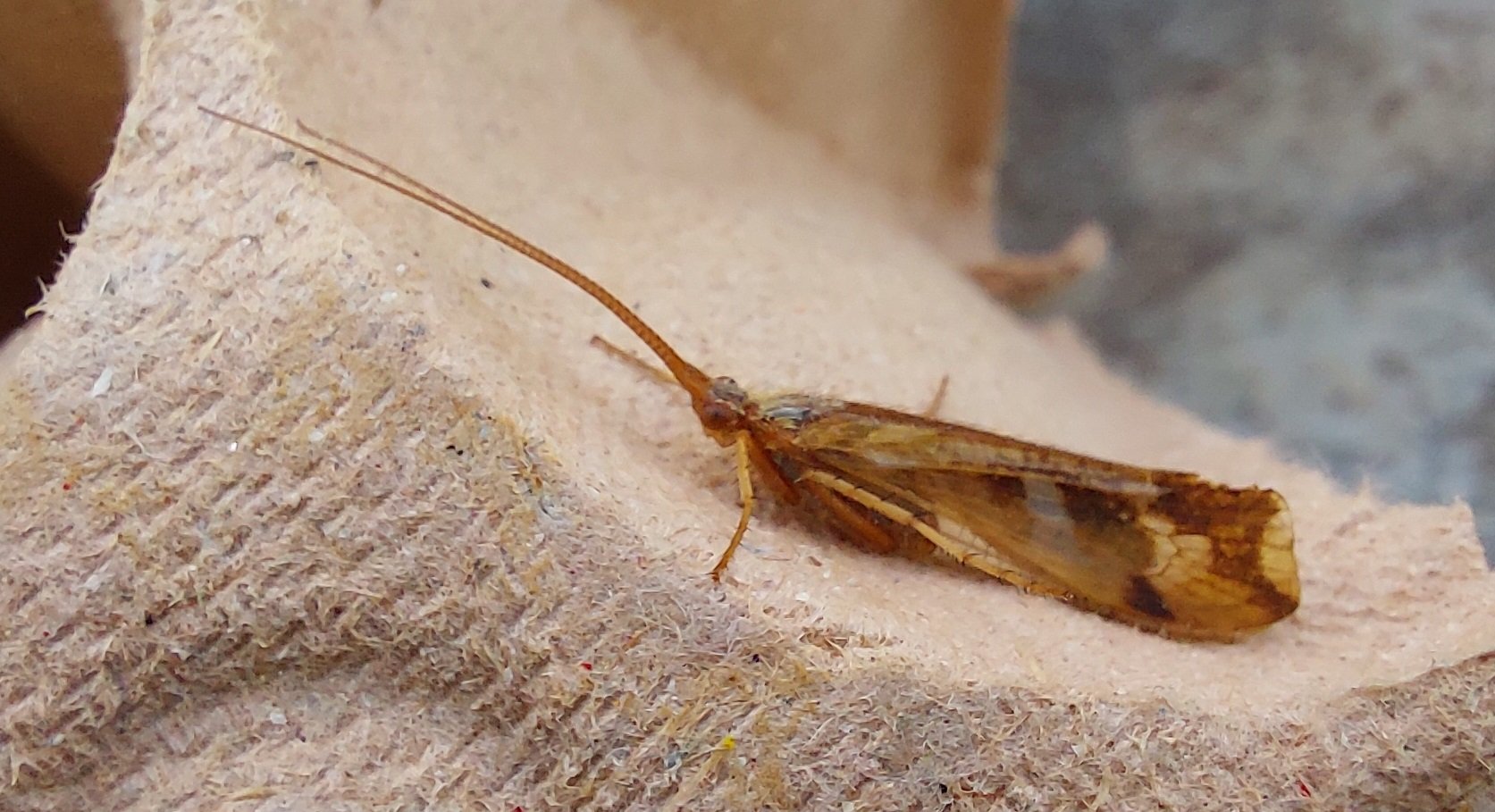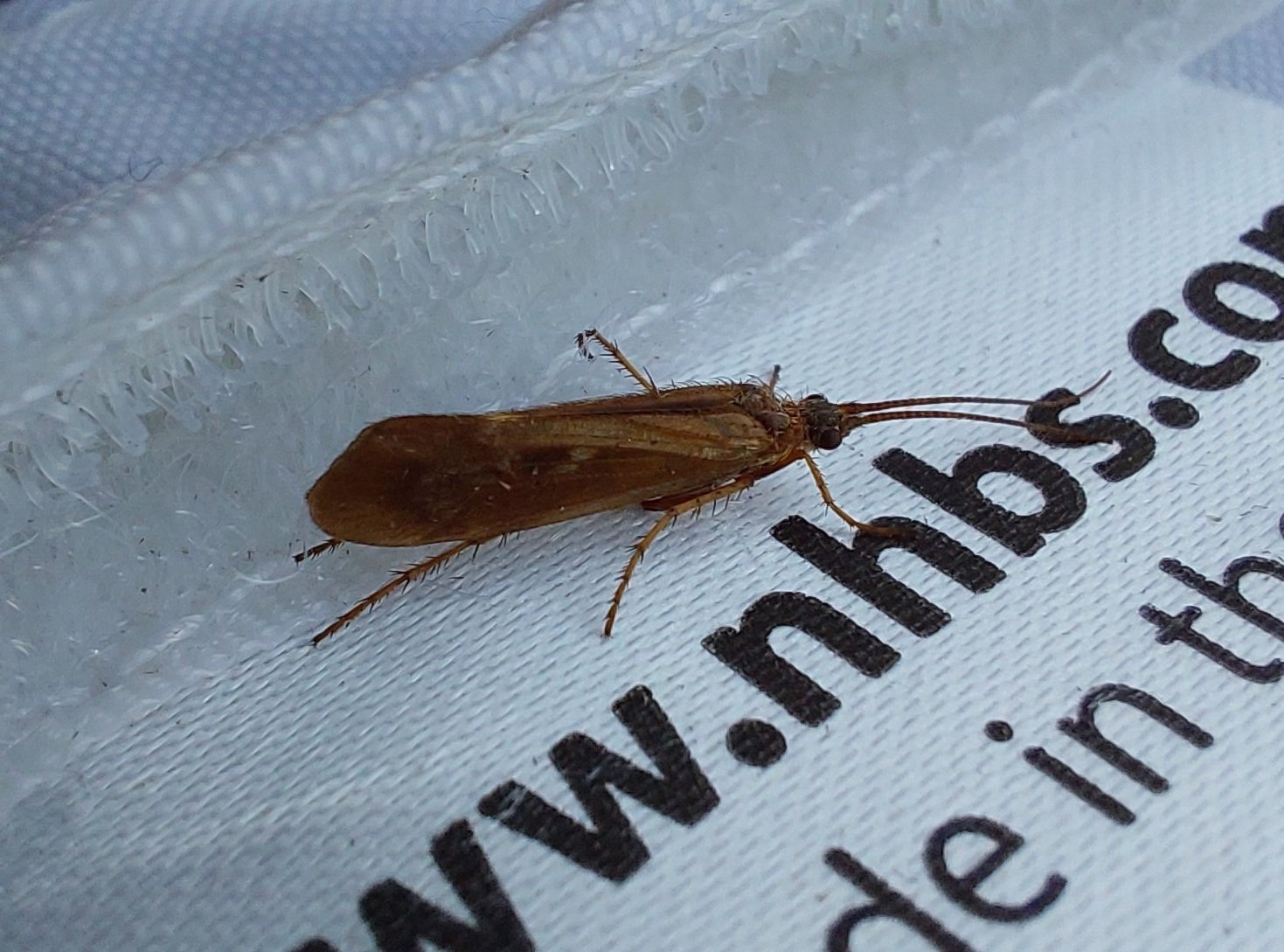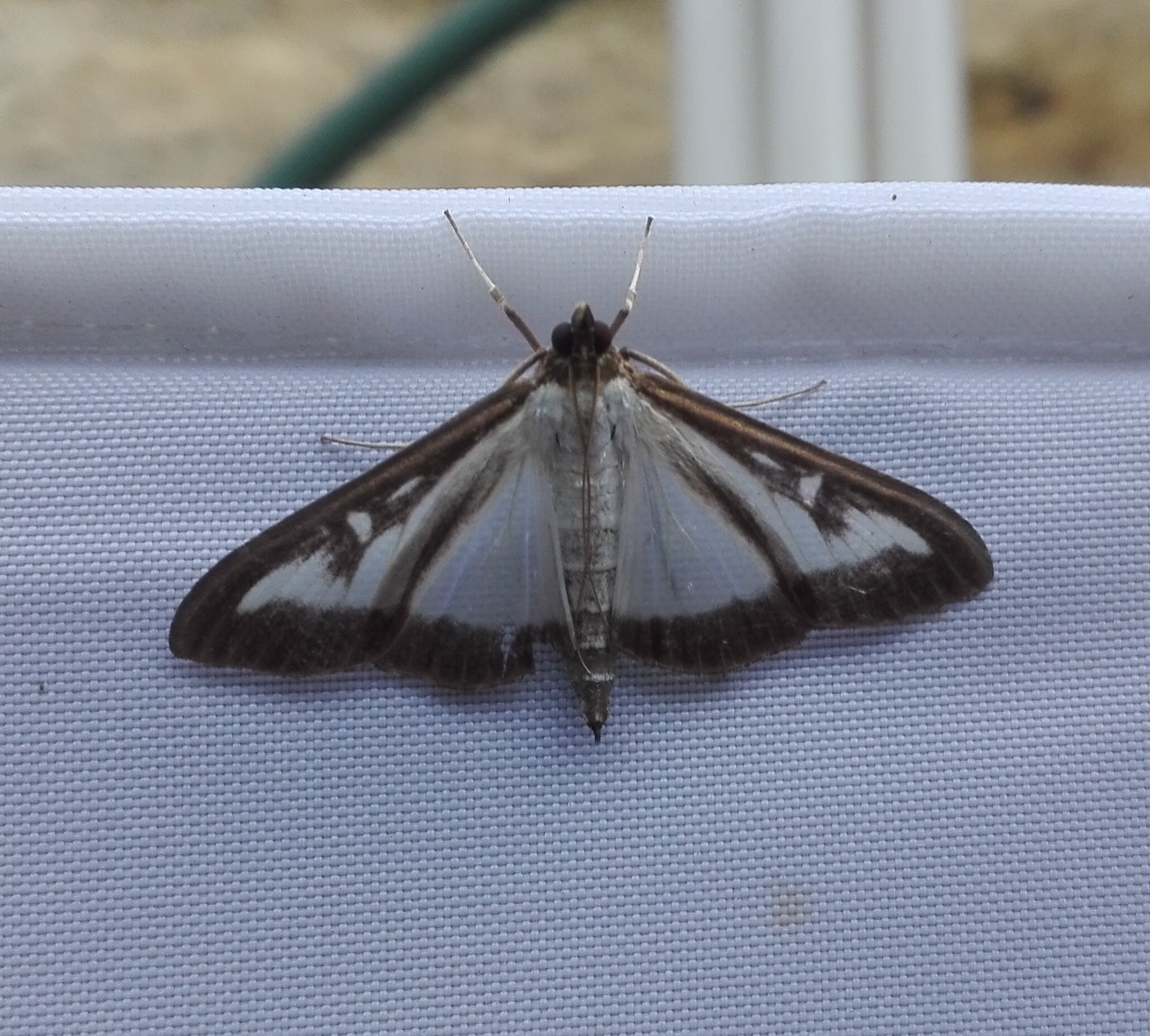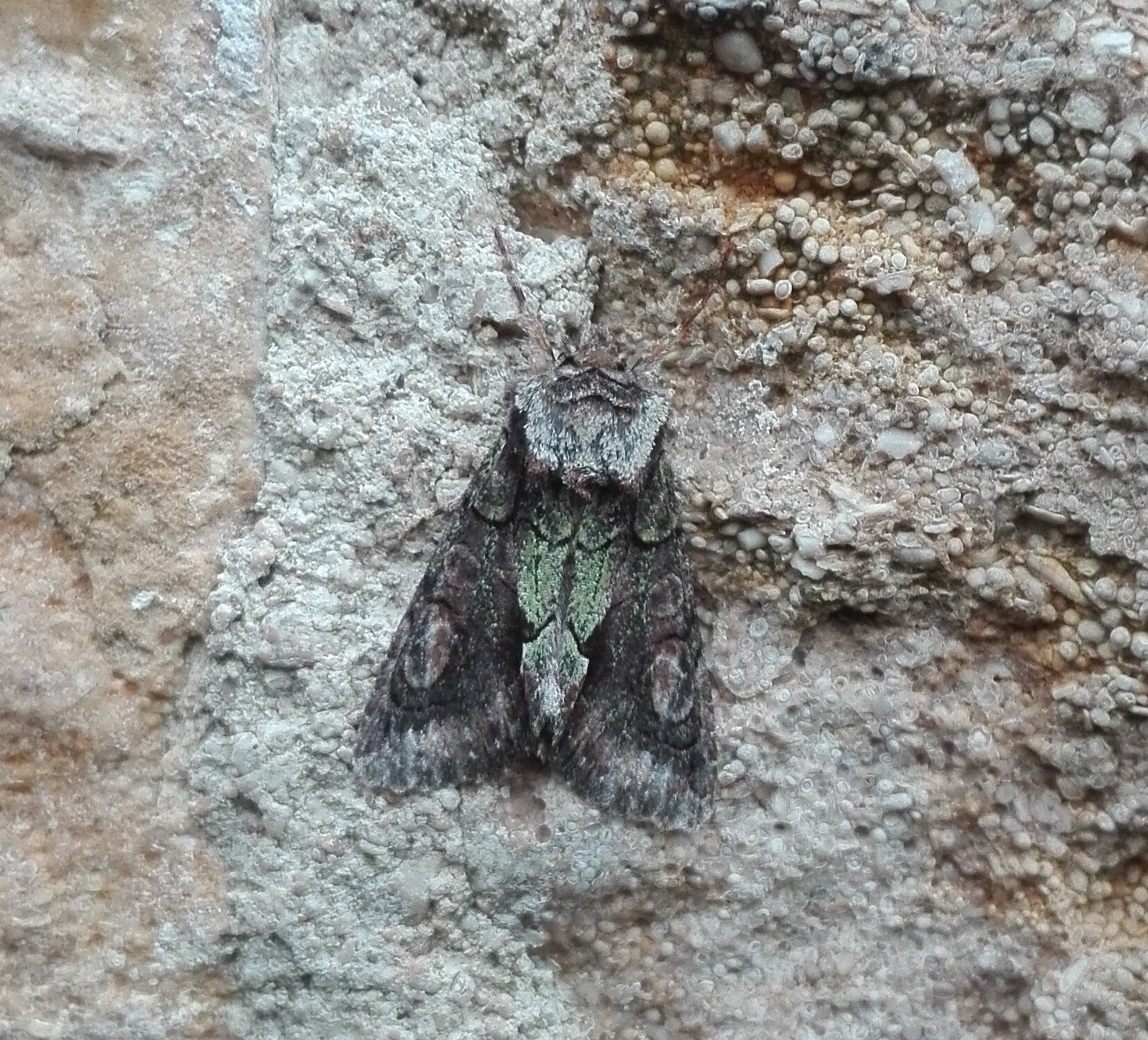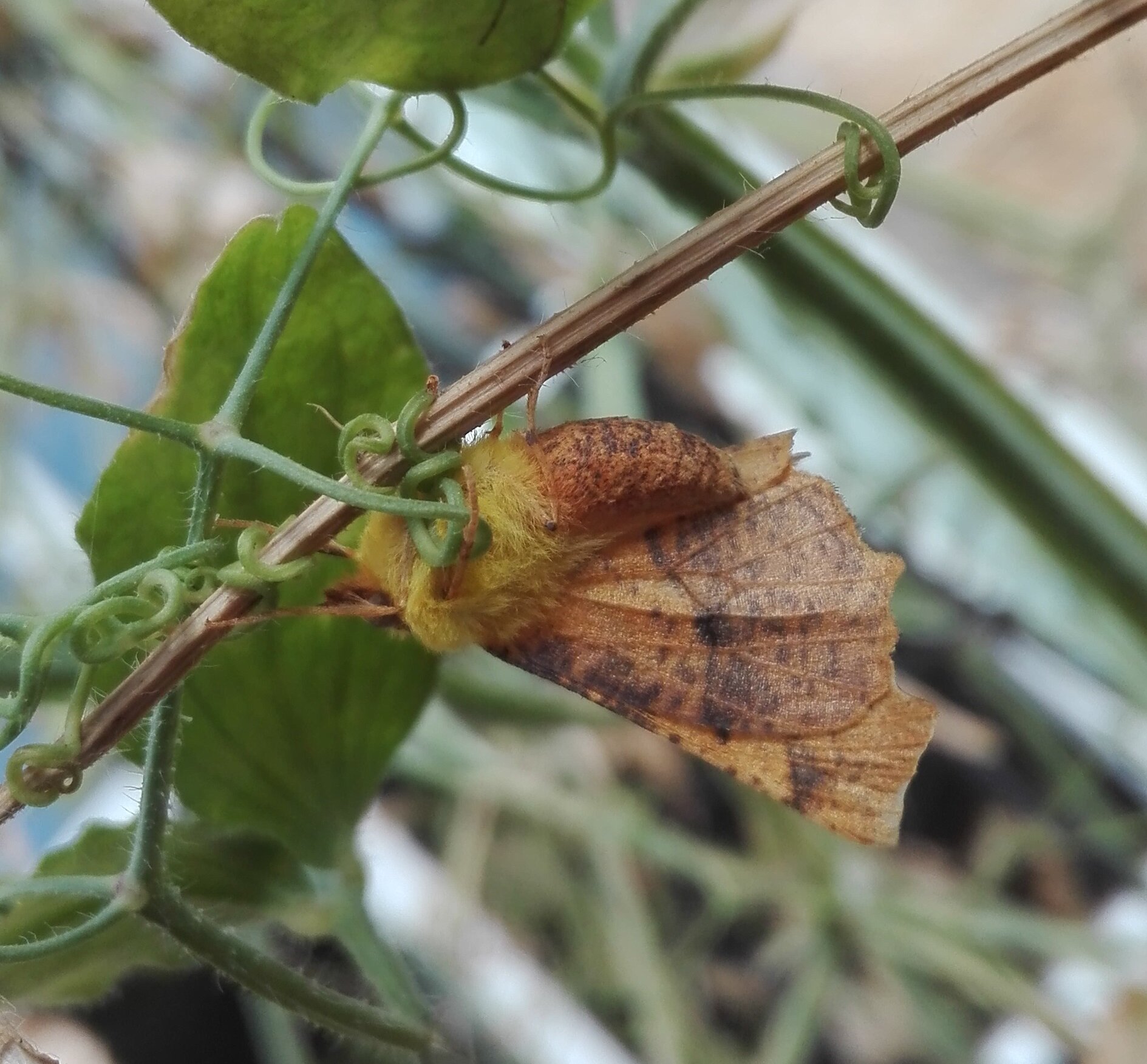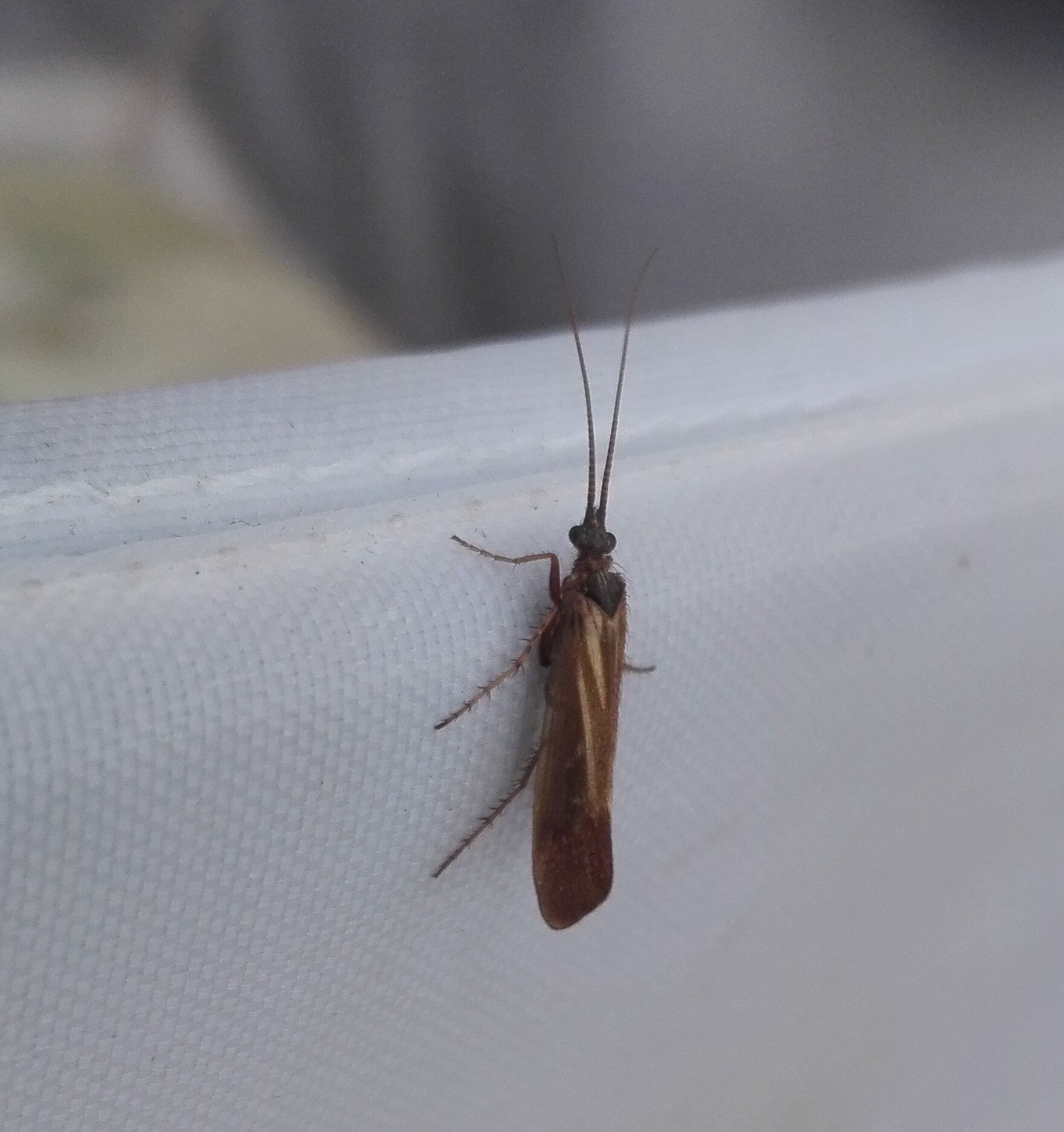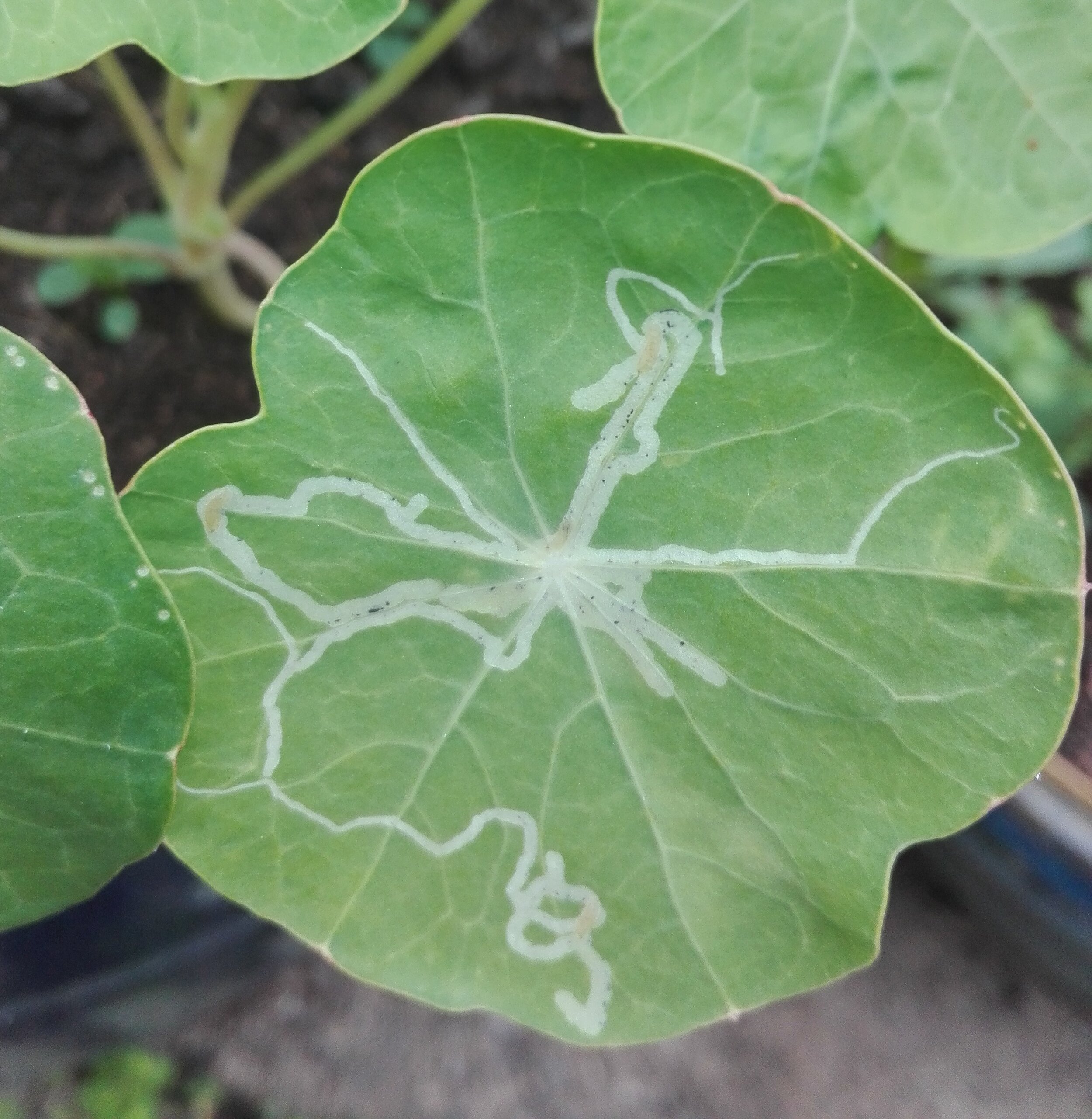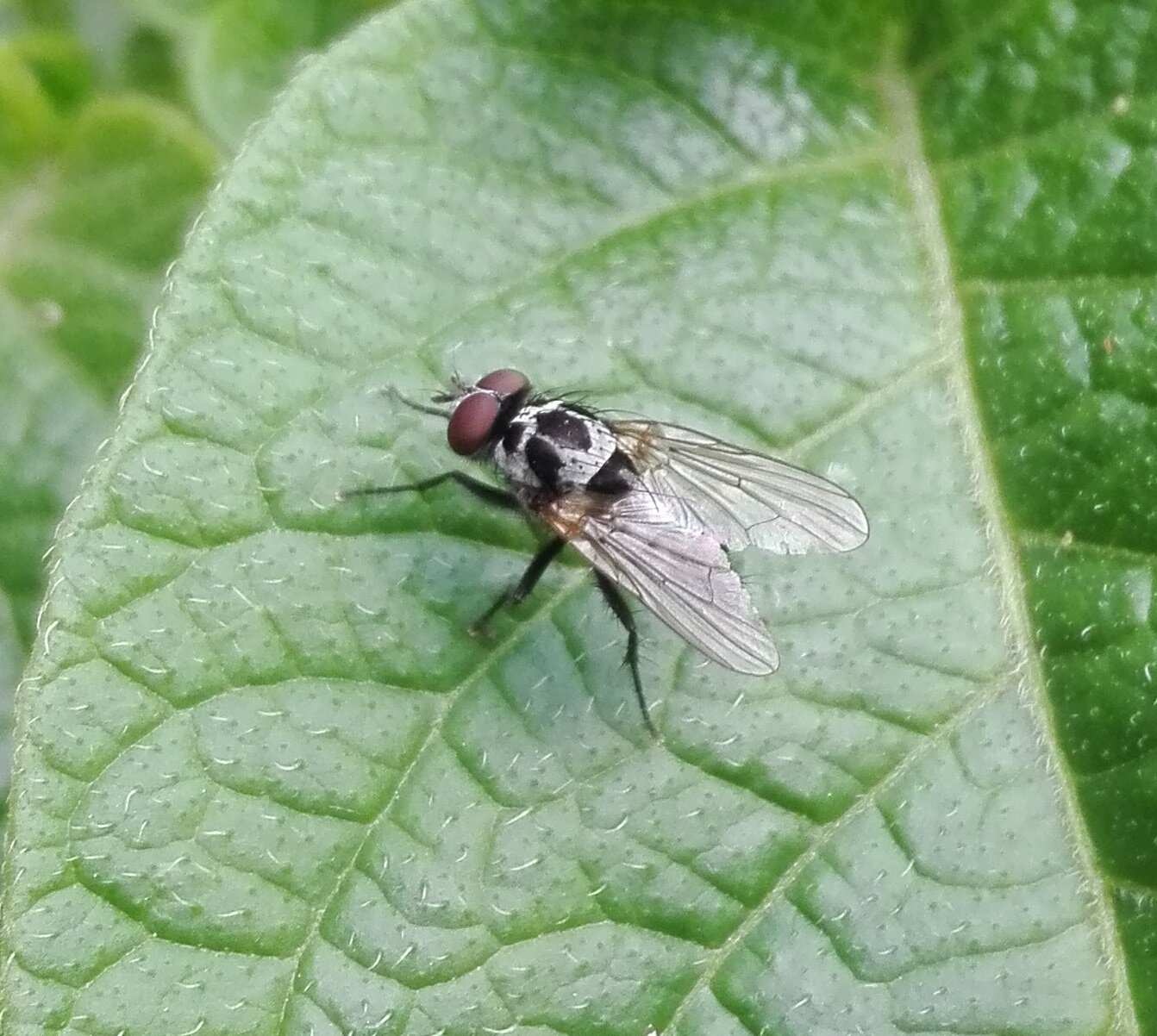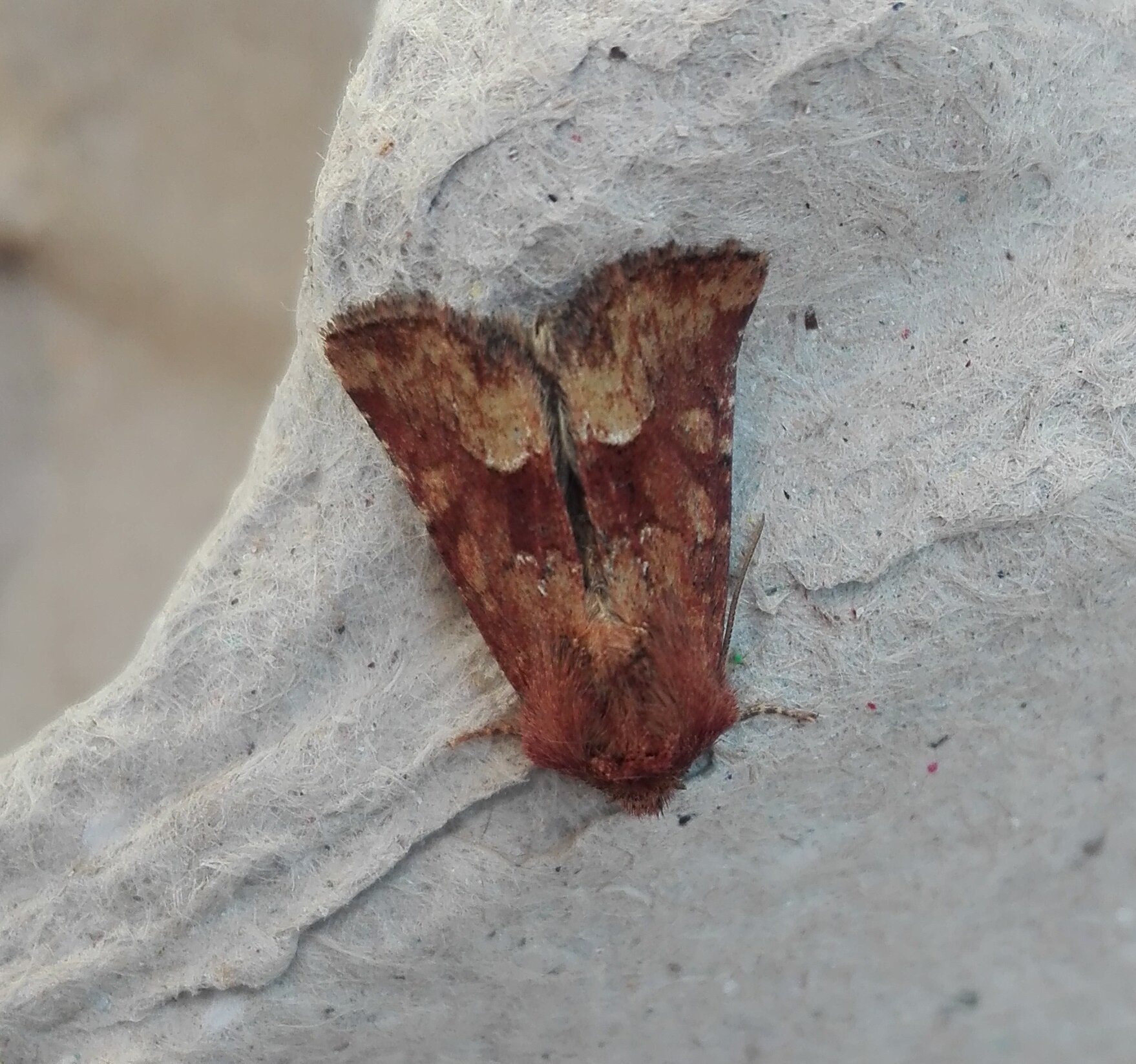This weekend there were a few new bugs about. This rather fine leaf mine on a Nasturtium leaf is from the larva of a fly, probably Pea Leaf-miner, Chromatomyia horticola (#616), though there is another species with an identical mine. Chromatomyia horticola mines leaves of different plants, which include Sow Thistle and Garden Peas, both of which I find in the garden with similar narrow white mines.
The smart-looking black & grey fly appears to be Anthomyia procellaris (#617), due to the placement of the block spots. It is not an uncommon fly, often found sunbathing - in this case on my potato plants. Its larval life-cycle is not really known.
The moth trap was fairly quiet on Sunday morning, with this rather burgundy-tinted Middle-barred Minor (Oligia fasciuncula, #615) the only new species caught. On Saturday night I noted several insects flying around the light turned which I thought were stripey micro moths, but it turns out hey were my fist species of caddisfly, the aptly named Long-horned Caddisfly (Mystacides longicornis, #618). Caddisflies are usually associated with water, where their larvae live in a case made from bits of sand and gravel. My garden is quite far from any stream, so either these insects roam further than you might expect, or maybe they are from one of my small garden ponds.


